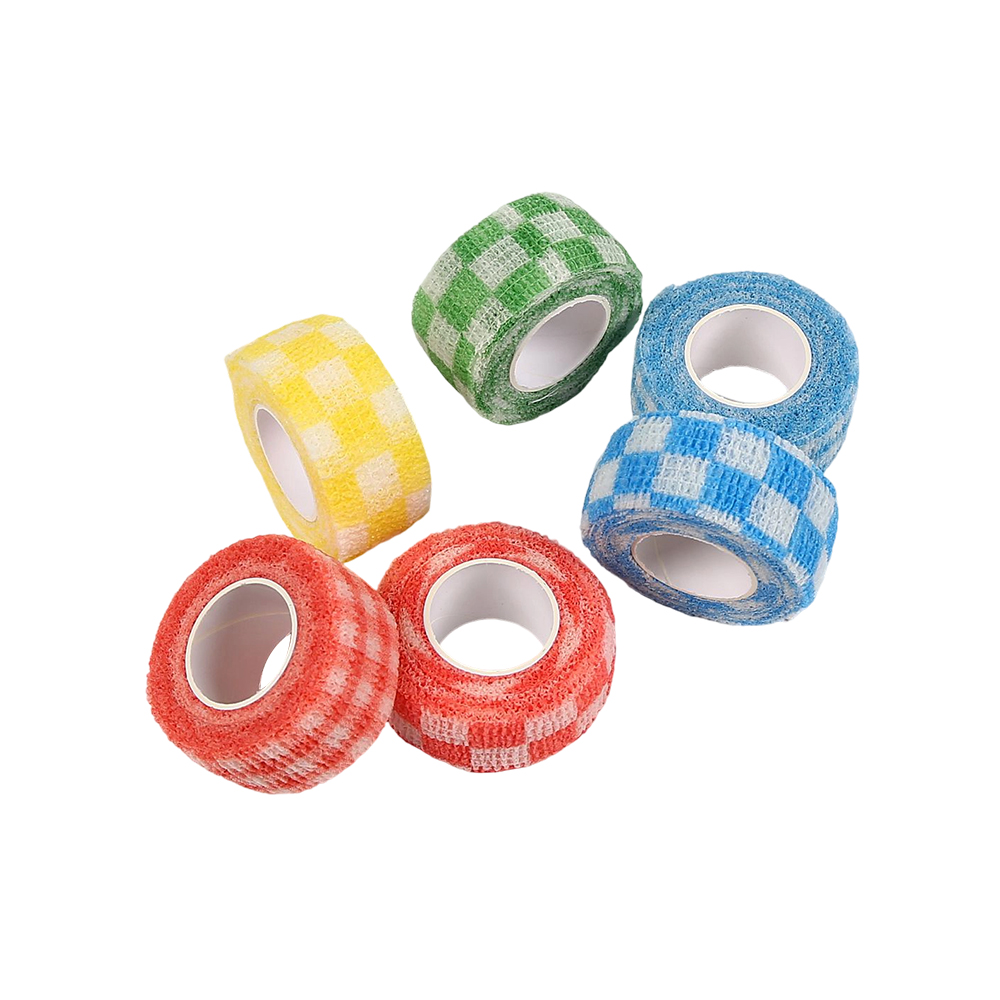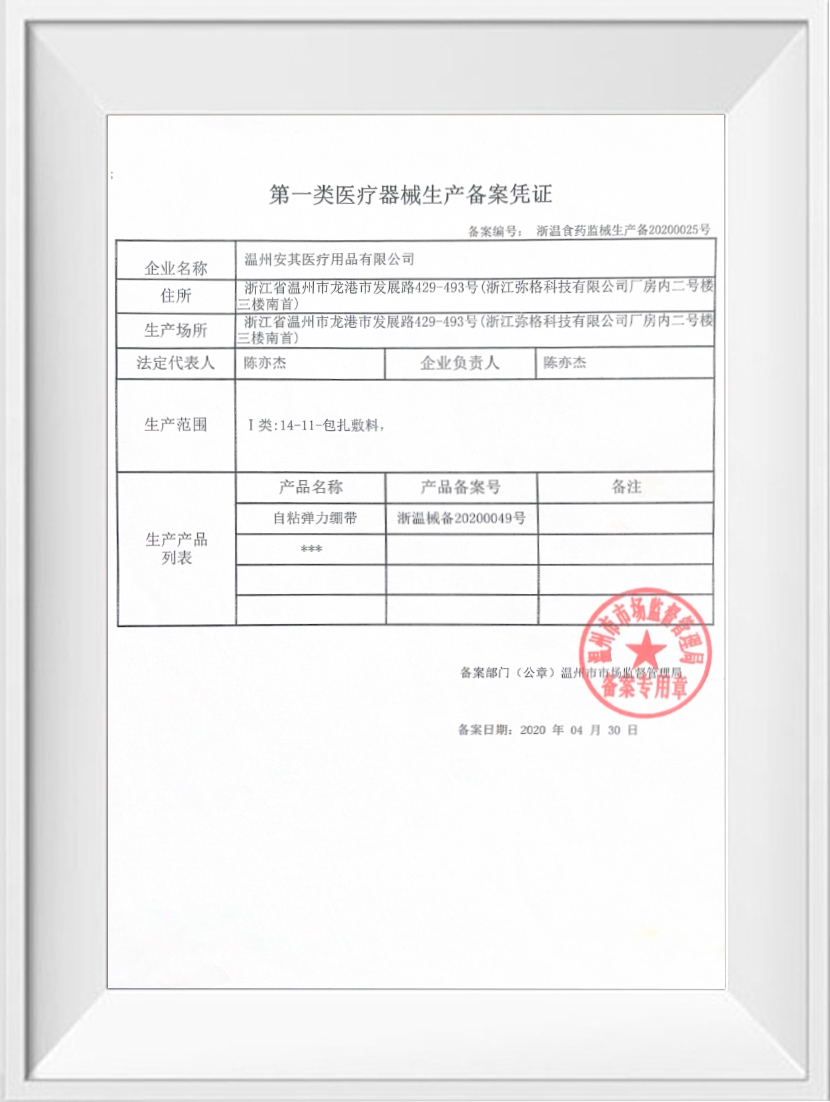Web Menu
Product Search
Exit Menu
We provide quality products and services to customers from all over the world.
Tracing the Evolution: A Realistic Look at the History of Self Adhesive Sports Athletic Joint Tape
Injury prevention and joint support are longstanding concerns in the world of athletics and physical rehabilitation. Among the various innovations developed to address these needs, Self Adhesive Sports Athletic Joint Tape stands out as a practical, widely-used solution.

Today, it's common to see athletes wearing this type of tape around wrists, ankles, knees, or fingers during games, workouts, and rehabilitation sessions. But like many modern tools, Self Adhesive Sports Athletic Joint Tape didn't appear overnight—it evolved over decades, shaped by advancements in material science, sports medicine, and user demand.
Long before Self Adhesive Sports Athletic Joint Tape became a staple in gyms and sports clinics, athletes and healers alike experimented with various ways to protect and stabilize the body. In ancient Greece and Rome, for example, warriors and athletes used linen cloth strips and leather bindings to brace joints. These early methods were largely improvised and lacked adhesive qualities, but the goal was the same: to reduce motion and protect vulnerable areas.
By the late 19th and early 20th centuries, with the emergence of organized sports and the formalization of sports medicine, medical-grade cotton bandages became more widely used. While these bandages were reusable and provided compression, they had to be secured with pins or clips and required considerable skill to apply correctly.
The major turning point came with the development of adhesive tapes for medical use. In the 1920s and 1930s, adhesive plaster and zinc oxide tapes began to appear in hospitals. These tapes were mainly used to secure dressings or immobilize limbs after injury. Although they provided adhesion, their inflexible nature and potential to irritate the skin limited their use in athletic contexts.
By the mid-20th century, the concept of taping joints in sport gained traction, especially in high-impact sports like football, basketball, and rugby. Traditional athletic tape—rigid, cloth-based, and adhesive—became standard equipment in locker rooms. Trainers would use pre-wrap (a thin foam layer) beneath the tape to reduce skin irritation. While effective, these taping methods required considerable time and expertise to apply correctly.
As demand grew for easier and more versatile taping options, product developers began experimenting with new materials. The result was Self Adhesive Sports Athletic Joint Tape, sometimes referred to as cohesive bandage or wrap tape. The key innovation was its self-adhering property: the tape sticks to itself but not to skin, hair, or clothing. This removed the need for additional clips or adhesives and greatly simplified application.
The iterations of Self Adhesive Sports Athletic Joint Tape appeared commercially in the 1970s and 1980s, initially used in veterinary medicine for treating animal injuries. Its benefits were quickly recognized in human applications, especially in sports and physical therapy. Lightweight, breathable, and elastic, it offered support without excessive restriction. It was particularly useful for dynamic taping of areas like the wrist or ankle, where flexibility and comfort are critical.
By the 1990s, Self Adhesive Sports Athletic Joint Tape was being adopted across a wide range of sports. Its ease of use made it popular among athletes, coaches, and even casual fitness enthusiasts. It became common practice to keep rolls of the tape in aid kits, gym bags, and training rooms.
In comparison to traditional athletic tape, Self Adhesive Sports Athletic Joint Tape required no special training to apply. Its ability to be torn by hand and its self-adhering nature made it ideal for quick fixes on the sidelines. The variety of colors and sizes also made it visually appealing and suitable for team branding or individual preferences.
In healthcare, physical therapists and doctors began using it to provide light support and compression for sprains, strains, and other soft-tissue injuries. Its hypoallergenic properties and comfort made it suitable for a broad range of patients, including children and those with sensitive skin.
Keep In Touch
No.455 New Town Development Road,Longgang City, Wenzhou City
Copyright © Wenzhou Anqi Medical Supplies Co., Ltd. All Rights Reserved.
Approval No: Zhejiang Wenzhou Food and Drug Administration Machinery Production Filing No. 20200025
The information provided on this website is intended for use only in countries and jurisdictions outside of the People's Republic of China.

 English
English русский
русский 中文简体
中文简体 Español
Español Deutsch
Deutsch عربى
عربى

